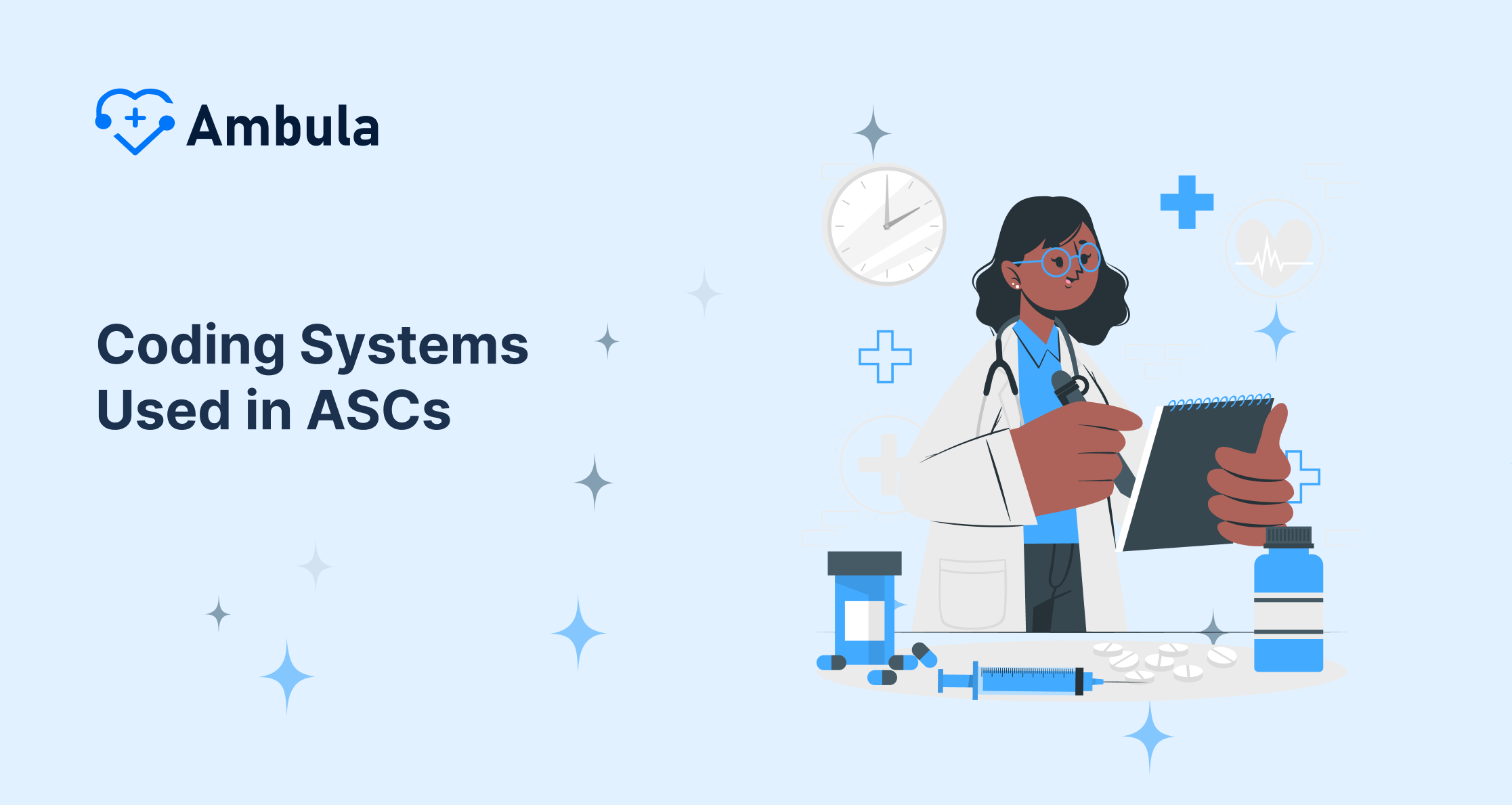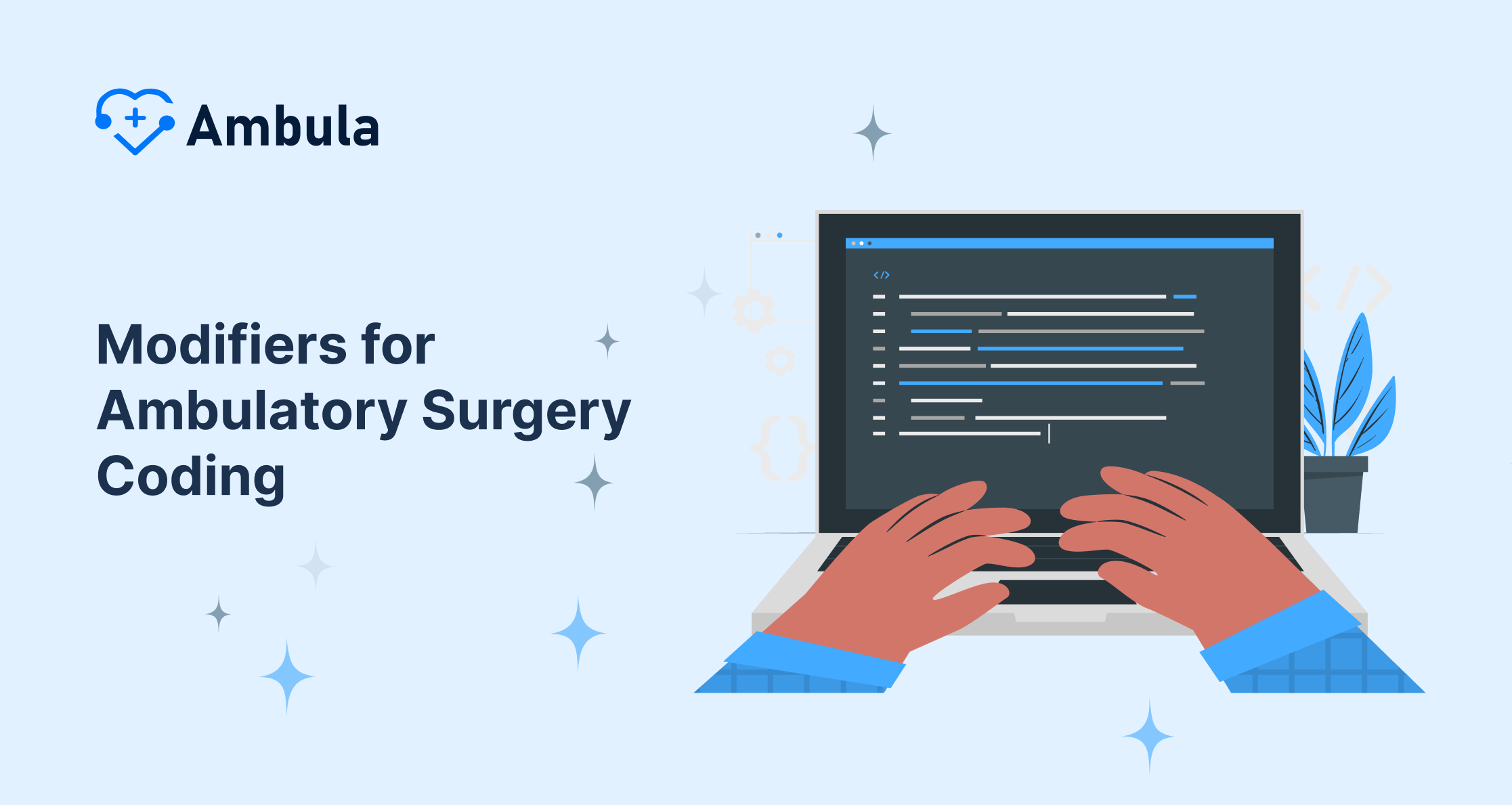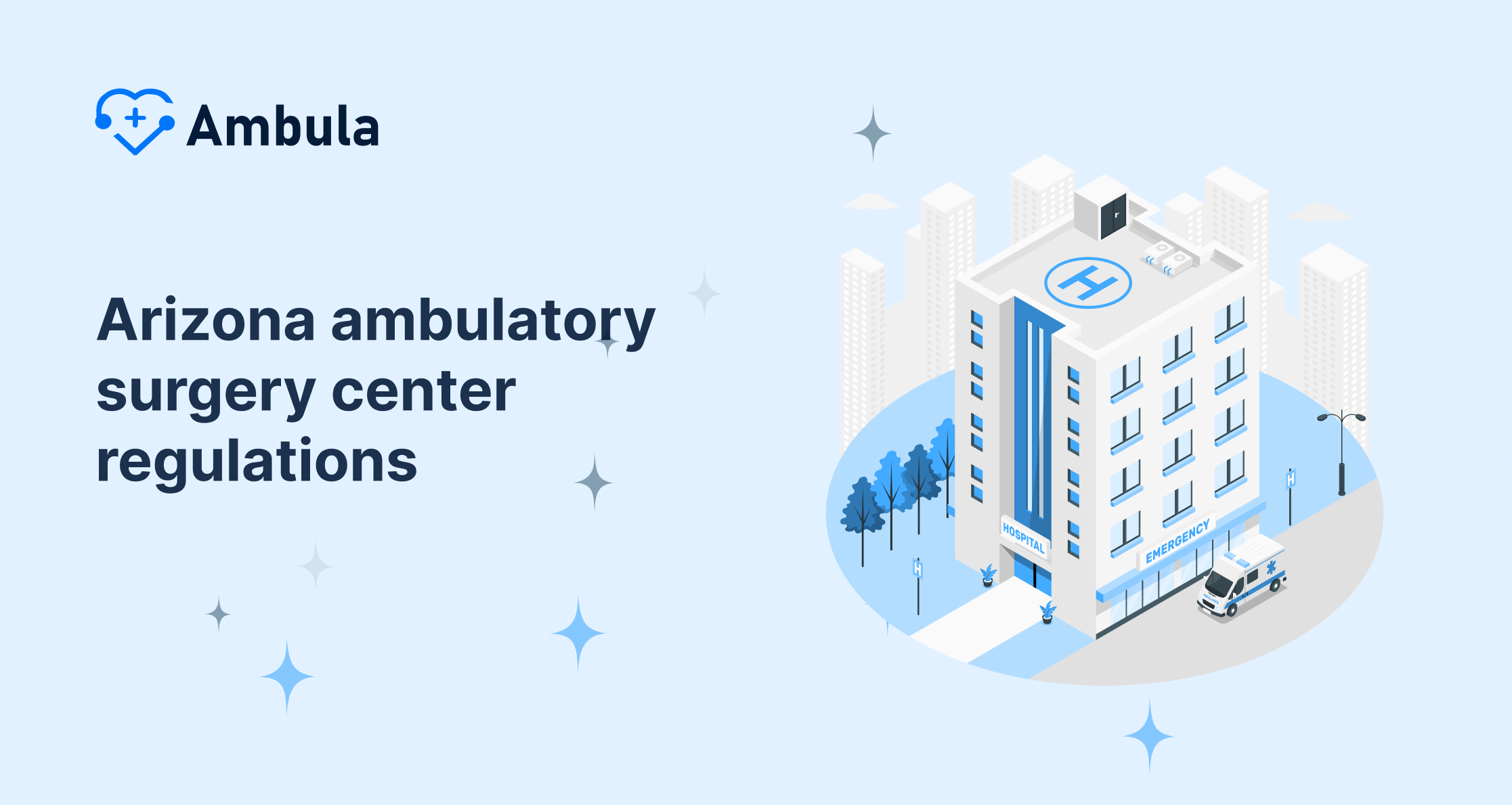In healthcare ambulatory surgery is causing a revolution. Patients get a handy and budget-friendly choice at Ambulatory Surgical Centers (ASCs) instead of the old hospital stay thing. ASCs get you in and out the same day for surgical care, whether for figuring stuff out or stopping problems before they start. But it ain’t just about being good with medicine to keep these places running right. The unsung hero? Nailing the ambulatory coding that happens offstage for these facility services to do well.
So, you gotta see ambulatory surgery center coding as the talk of medical money matters. It turns all the complex bits of surgery stuff and the details of what’s up with the patient into these neat little codes. Then, the surgery centers roll with those codes to chat up insurance firms, Medicare also the bigwigs at Centers for Medicare & Medicaid Services (CMS), to make sure they get the cash they should for what they did. Getting the ASC billing and coding spot on is super important here. If you mess up the codes or don’t finish ’em, it can cause hold-ups, the no-go from insurers, and can seriously mess with the surgery center’s finances. It’s like the difference between a revenue cycle management system that’s purring like a kitten and one that’s choking up ’cause of coding blunders.
Coding Systems Used in ASCs
Within the walls of an ambulatory surgery center, a precise language governs communication – the language of asc medical coding. This intricate system ensures precise and accurate representation of patient services, forming the foundation for ambulatory billing and reimbursement. Two primary coding systems reign supreme in ASCs:
- Current Procedural Terminology (CPT®) codes: These codes, developed by the American Medical Association (AMA), serve as the universal language for describing medical, surgical, and other healthcare services. Each CPT code represents a specific procedure coding, offering a standardized way to communicate the complexity and nature of the care provided. For instance, ambulatory surgery coding examples might include a CPT code for a knee arthroscopy or cataract removal, while outpatient surgery coding examples could involve codes for colonoscopies or endoscopies.
- International Classification of Diseases, Tenth Revision, Clinical Modification (ICD-10-CM) codes: Shifting gears from procedures to diagnoses, ICD-10-CM codes, a globally recognized system, play a vital role in asc billing guidelines. These codes categorize a patient’s condition or reason for the surgery. They provide a detailed picture of the patient’s health, influencing medicare reimbursement rates and ensuring accurate documentation requirements. Imagine an ICD-10-CM code pinpointing a specific type of knee injury leading to the need for arthroscopic surgery.
While CPT and ICD-10-CM form the backbone of asc codes, there’s another player to consider: HCPCS Level II codes. Unlike CPT codes, which focus solely on procedures, hcpcs codes encompass a broader range, including specific drug coding, supplies, and certain durable medical equipment used during surgery. Think of them as additional vocabulary words that, when used judiciously, provide a more complete picture of the resources utilized during a patient’s care.
Understanding these three coding systems – CPT, ICD-10-CM, and HCPCS Level II – is paramount for accurate ambulatory surgery center billing guidelines. Each code acts as a critical piece of information, enabling clear communication with insurance companies and ensuring the smooth financial operation of these essential healthcare facilities. Mastering these systems is a key focus in asc coding and billing training and ambulatory surgery coding training programs.
Why You Gotta Be Precise in ASC Coding
Consider a code as your guide on a journey. A basic code sort of takes you near where you need to go, but it doesn’t show you the exact spot. Now precision, that’s like rocking a high-tech GPS. It nails down the coding with super accuracy grabbing all the tiny bits of a surgery’s coding or what’s wrong with someone. Like, you got a code that says “knee surgery,” but a pinpoint code will tell if it’s just a quick look inside the knee with a camera or fixing a torn part.
A detail-oriented method for walk-in service billing in healthcare can bring tons of perks. First off, it ensures that the Ambulatory Surgery Center gets the right payback for its work. Each particular code shows the real level of how tough the patient’s treatment was, which paints an exact picture of money matters and sets fitting “payment rates”. Next up, pinpoint coding helps see how patients get treated more . Knowing all the nitty-gritty about someone’s health helps a lot when choosing what to do next for their care and figuring out where to put resources.
Getting to the nitty-gritty is no solo gig. Spot-on coding all begins with the doctor’s notes scribbled in the patient’s health files and surgery details. These scribbles guide coders like a treasure map spelling out the nitty-gritty of the ops done and how the patient was doing. With these details, coders pick out super precise codes that nail down the treatment given at the outpatient surgery hub.
Coding is a big deal for ASCs. It’s like when you nail every single detail of a procedure and diagnosis, you’re making sure they get the right amount of money understanding patients better, and everything just runs way smoother in these super important health places. Sticking to coding rules for surgeries that happen on the same day is super important. You gotta stay on top of it, or else when someone checks your work, they might find mistakes. And getting the specifics right isn’t about cash; it has an influence on stuff like “quality reporting” and keeping up with “HIPAA compliance.”
Coding Tips for Surgery Centers
Now when it comes to surgery centers, unlike regular insurance businesses, Medicare rocks its own set of rules for reporting and cashing in on drugs and gadgets used in surgery. These are part of the must-dos for coverage that surgery centers gotta nail to be in the Medicare club, all laid out in the CMS ASC billing guidelines.
So here’s the twist: when surgery centers send their bills to Medicare, they better skip using HCPCS Level II codes for those meds and machines. Even though these codes are a big deal elsewhere in the health world, Medicare ain’t giving them the same love for surgical billing. Instead, Medicare wants the nitty-gritty details.
Think of it like a grocery list—pretty much what Medicare asks for from ASCs. They gotta list each med and gadget used during an operation on its own line. Listing stuff this detailed makes everything clear as crystal, so Medicare can figure out what the surgery costs by looking at what they used. It’s mega important for understanding the role of an ASC in medical billing and vital for working out how much cash Medicare hands over to ASCs.
So, like, an ASC won’t just throw in a Level II HCPCS code for “surgical supplies.” Nah, they’ve gotta detail every single thing they used, like stitching stuff, wraps, or special surgery tools. Doing it this way makes sure the ASC gets the right amount of money back and tosses some good numbers to Medicare and CMS to work out costs and figure out what they’ll do about the ASC payment system down the road.
ASCs nail the billing process and lock in the right money for what they use to treat folks when they stick to Medicare’s special drug codes and device codes. This deal’s good for everyone. It makes things clear as glass and helps get top-notch surgery done in the Medicare world. You gotta get these little details down if you wanna be a hotshot at ASC stuff or a whiz at understanding the CMS ASC billing guidelines.
Modifiers for Ambulatory Surgery Coding
While CPT codes form the foundation of ASC billing, there’s another layer of complexity that adds further detail and clarity – coding modifiers. These seemingly innocuous two-digit codes act as qualifiers, providing additional information about a procedure that the base CPT code alone might not capture. Think of them as footnotes in a medical document, offering crucial context to the story. Understanding and correctly applying these modifiers is crucial for accurate ASC claims processing.
Several common modifiers play a vital role in ambulatory surgery coding. Here are a couple of key examples from the ASC modifier list:
- Modifier -54 (discontinued procedure): Imagine a scenario when coding for an ambulatory surgical procedure where a surgeon starts a particular procedure during an ASC surgery, but upon encountering unexpected complications, decides to discontinue it and opt for a different approach. In this situation, modifier -54 would be appended to the original CPT code. This informs Medicare or other payers that the initially planned procedure was indeed started but ultimately not completed.
- Modifier -74 (procedure not performed): Sometimes, during pre-operative evaluation or even mid-surgery, a planned procedure may be deemed unnecessary. Perhaps the patient’s condition has improved, or new information has come to light. In such cases, modifier -74 is used alongside the CPT code for the procedure that was not performed. This clarifies the situation for Medicare and other insurance companies, ensuring they aren’t billed for a service that wasn’t actually rendered.
Using modifiers judiciously allows for a more accurate representation of the surgical episode within the ASC. They provide a clear picture of what transpired in the operating room, preventing confusion and ensuring proper reimbursement for the services delivered. By mastering the art of modifier application, ASC coders contribute significantly to the financial health and transparency of these vital healthcare facilities. Proper use of modifiers is a key focus in ambulatory surgery center billing training and is essential for accurate Medicare claims processing.
Staying Up-to-Date on Coding Guidelines
Imagine a map – an outdated one can lead you astray. Similarly, relying on outdated coding information can have significant consequences for ASCs. New procedures emerge, coding systems are revised, and Medicare guidelines shift. Coders who fail to stay informed risk inaccuracies in their work, potentially leading to billing errors, claim denials, and financial setbacks for the ASC.
Fortunately, a wealth of resources exists to empower ASC coders to stay ahead of the curve. The American Medical Association (AMA), the authoritative body behind CPT coding, provides ongoing updates and educational materials. These resources keep coders informed about the latest additions, deletions, and revisions to CPT codes, ensuring they have the most accurate tools at their disposal.
Another invaluable resource is the American Academy of Professional Coders (AAPC). This professional organization offers a comprehensive range of educational programs, webinars, and certifications specifically designed for ASC coders. By tapping into these resources, coders can stay abreast of the latest coding requirements, best practices, and industry trends, including updates to the ASC covered surgical procedures list and changes in payment rates.
Wrap-Up
When we dive into the universe of same-day surgery coding, it’s a mix of pinpoint accuracy and super clear communication. Inside the ASCs, they’ve got this solid setup that nails down communicating patient services, which is super important for getting the money side of things sorted.
At the core of it all are a couple of key coding types: we’re talking about CPT codes for all the different procedures and ICD-10-CM codes for figuring out what’s wrong with the patient (the diagnoses). If you get real sharp and specific with these codes, it’s like drawing a super clear picture of the treatment that went down. The sharper the code the better the chances that big names like Medicare and CMS, plus other insurance players, will shell out the right amount of cash to the ASCs.
Dealing with the complex parts of ASC coding isn’t just about the main systems. Take Medicare as an example—it’s got its own set of unique guidelines when it comes to coding drugs and devices. ASCs must be super careful to put down every single thing they use on its own line. Plus, you’ve got modifiers jumping into the mix, and these are super important ’cause they give extra info on stuff like procedures that might get stopped or maybe not done at all.
ASCs must keep up with the always-changing coding scene. The AMA and AAPC give coders tools to keep up with changes, tweaks, and top methods. This constant focus on right coding helps all people in the mix. ASCs get to enjoy steady money and smooth running. Patients get correct records and better surgery care.
Wrapping it up, getting the hang of the nitty-gritty in coding stuff for walking surgeries is super important for the centers doing these surgeries to rock it in the medical world now. By getting what’s what in the “ASC payment system” and staying hip with the freshest “CMS ASC billing guidelines,” the folks handling codes are mega important in making sure these spots keep serving up critical “outpatient surgical procedures” for folks like “Medicare beneficiaries” without wasting time or cash.







